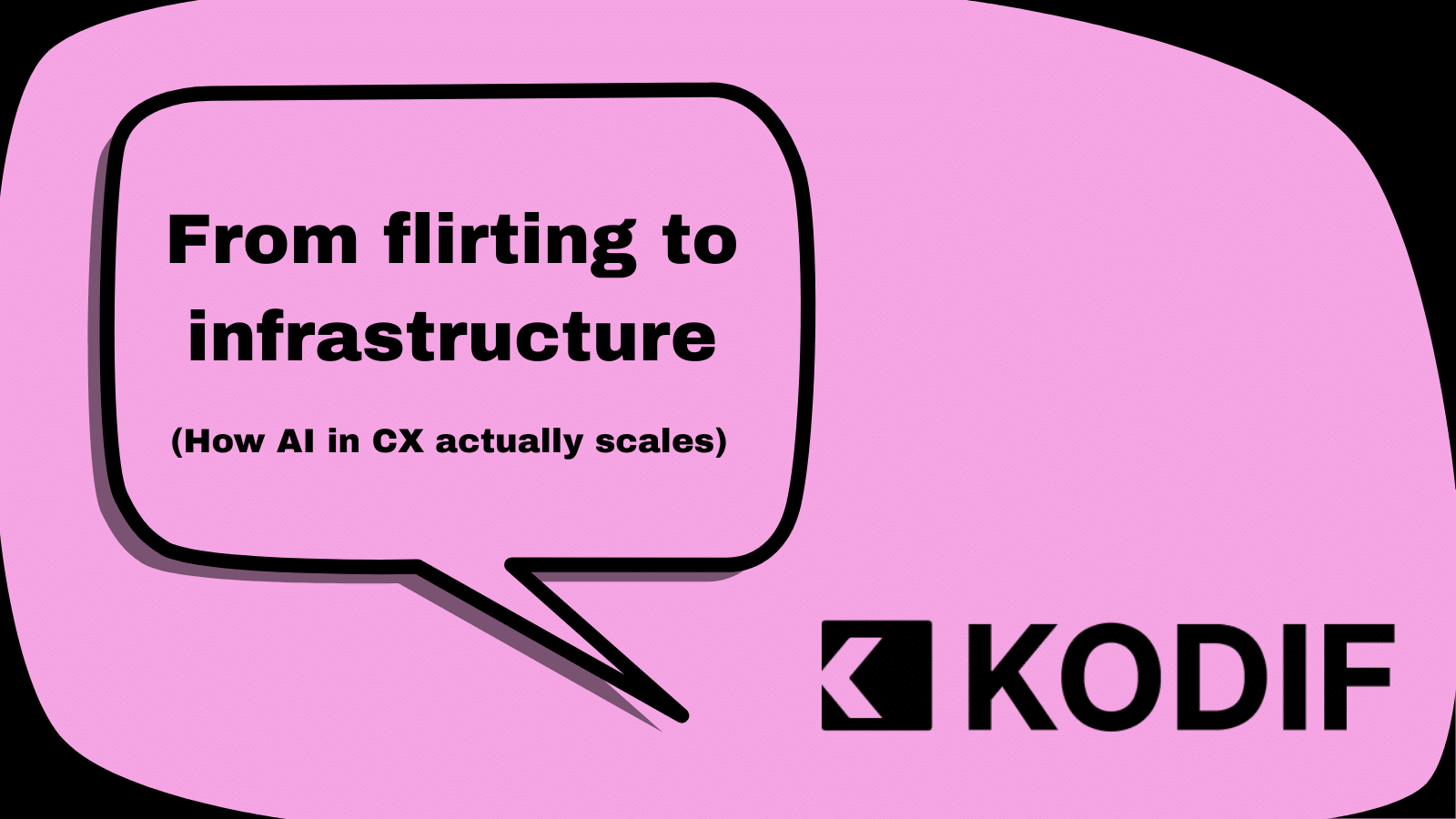It usually starts with a chatbot.
A customer service team (under pressure to scale, reduce costs, and respond faster) adds a bot to their website or help center. They feed it a few FAQ answers, maybe wire up a flow for order status, and let it loose on unsuspecting visitors.
Then the announcement: “We’ve added AI to our CX stack.”
What they’ve actually added is AI-adjacent convenience, not customer experience transformation.
That matters because AI that isn’t connected, contextual, or trainable isn’t really AI. It’s just a fancier interface for your knowledge base.
Most companies aren’t transforming anything with AI
That might sound harsh. But when you look at the current state of AI adoption in CX, it’s clear that a lot of teams are still stuck in the experimentation phase.
A few examples:
- Bots that don’t remember who the customer is or what happened last time
- “Integrations” that consist of webhook workarounds and help desk macros
- Tone-deaf conversations where the bot responds to a refund complaint with “Great! Happy to help!”
- Automations that deflect tickets but never actually resolve the issue
None of these things are inherently bad. Many companies start here. The question is when they stop here.
Dipping in is fine (unless you’re counting on results)
We’re at the point where AI has moved past novelty. Teams aren’t just experimenting for fun anymore, they’re doing it because they need efficiency, scale, and insight. Now.
And when your goal is meaningful ROI—lower cost per resolution, higher retention, faster onboarding, better agent performance—dabbling won’t cut it. You need something that actually functions as part of your core support infrastructure.
That means AI can’t just live on the surface. It has to be tied into your systems, trained on your language, and aligned to your workflows.
Otherwise, you’re not using automation, you’re just layering complexity on top of broken processes.
The chatbot myth: why surface-level AI doesn’t scale
A lot of the AI tooling we see in CX is still built around the idea of “deflection.” The goal is to intercept tickets and reduce the human workload, which is a fine idea in theory. But deflection without resolution is just rerouting frustration.
If a customer asks about their missing order and your bot offers tracking info from three weeks ago, they’re not going to thank you for the automation. They’re going to leave.
Real AI doesn’t just interact, it acts. It updates accounts, triggers workflows, pulls real data, flags edge cases, and learns from feedback. And it does it while sounding like your brand, not a slightly smug IVR script.
So what does real AI in CX actually require?
Let’s break it down. To be transformative, not performative, AI in CX needs:
1. Context
AI that forgets everything as soon as the chat ends isn’t helpful. At a minimum, it needs access to the customer’s history, ticket behavior, subscription status, sentiment trajectory, and the actions they’ve already taken.
2. Integration
It should plug into your ecommerce stack (Shopify, Klaviyo, etc.), your ticketing system, your subscriptions, your inventory, and more. Not through brittle, custom-built middleware, but natively, and with full context.
3. Memory and continuity
If a customer has opened three tickets this month and paused their subscription last week, that should inform how the AI interacts with them. This isn’t advanced personalization, it’s basic empathy, at scale.
4. Customizability
You need to be able to define what your AI agents say, how they say it, what actions they’re allowed to take, and how they handle risk scenarios. “AI voice” should never override your brand voice.
5. Feedback loops
If AI makes decisions, you should be able to review them, measure their performance, and tune them over time. Whether through sentiment scoring, human-in-the-loop QA, or automated auditing, you need a path to continuous improvement.
6. Support for the whole org
AI shouldn’t just be for your chat widget. It should help agents handle tickets faster, give managers insights into policy effectiveness, and give analysts trend data to improve workflows.
Real transformation happens when AI isn’t just a tool, it’s part of the system
The companies that are truly using AI to transform their CX aren’t doing it with chatbots alone. They’re building (or buying) intelligent platforms that act as an extension of their support team, automating resolution, not just replies.
They’re not just looking at how many tickets they can deflect. They’re asking:
- Which types of customer moments are leading to churn?
- Where are our agents wasting time that could be automated?
- How can we better segment experiences based on customer value, behavior, and channel?
- What repeatable actions could be owned by AI, freeing agents for the complex stuff?
And most importantly: how do we make this sustainable—not just shiny?
Final thoughts: dabbling is easy. Transformation takes intent.
It’s okay to start small. But if your AI journey stops at a chatbot that only knows how to say “Hi, how can I help?”, you’re not transforming anything, you’re just automating disappointment.
CX leaders don’t need more bots. They need systems that learn, act, and scale.
If you want AI to be more than a buzzword in your next board meeting, it has to be more than a widget in your help center.


